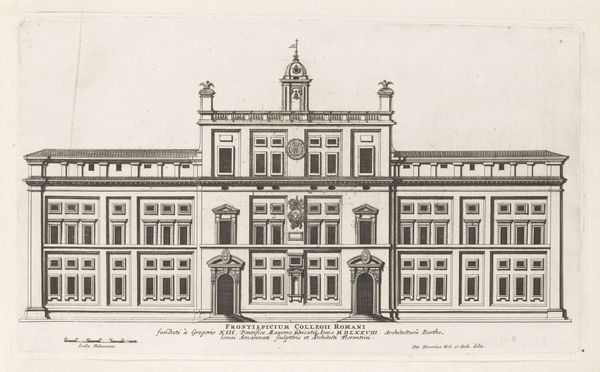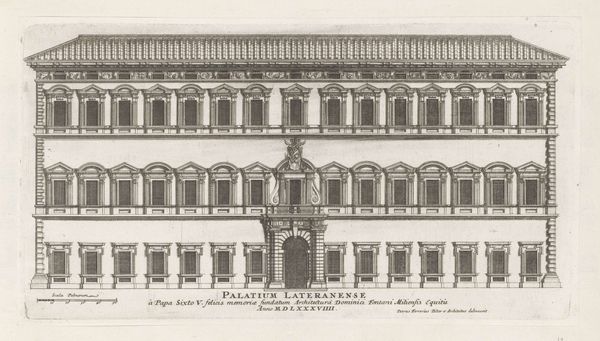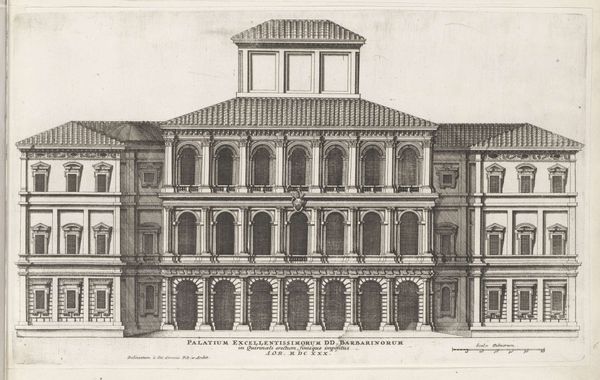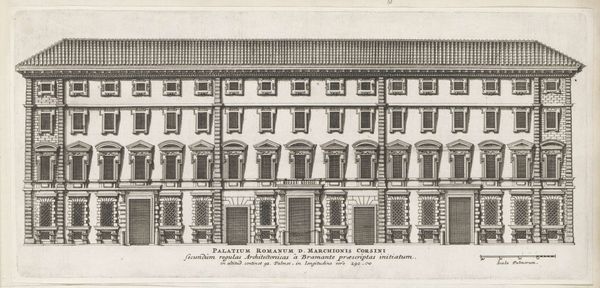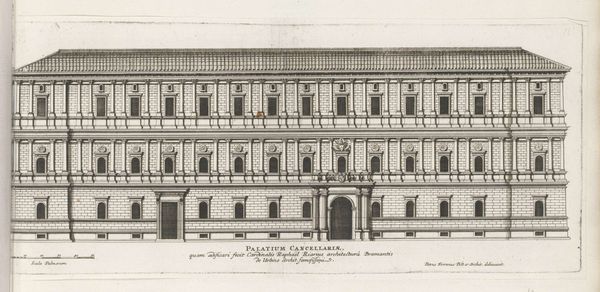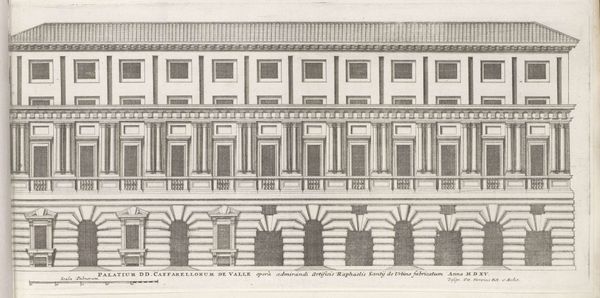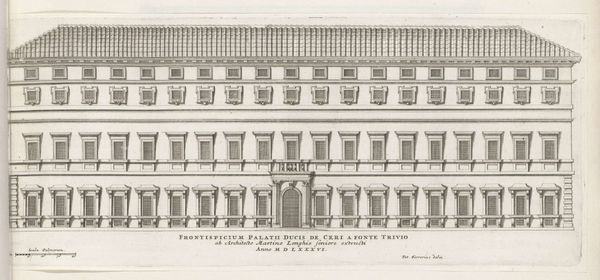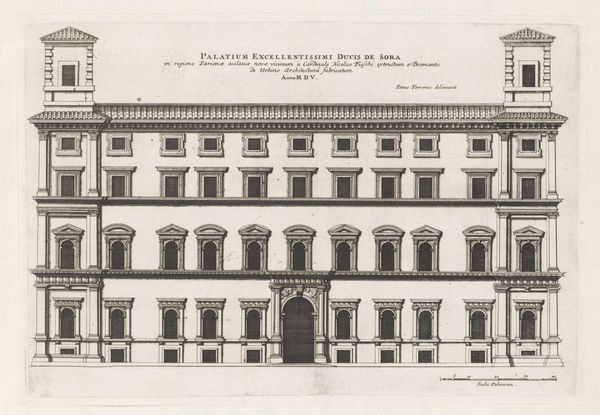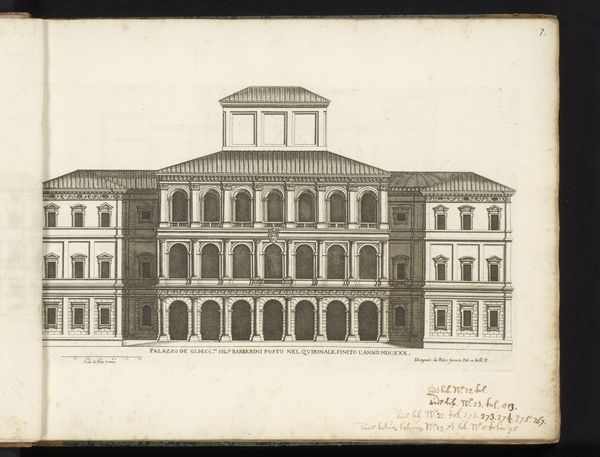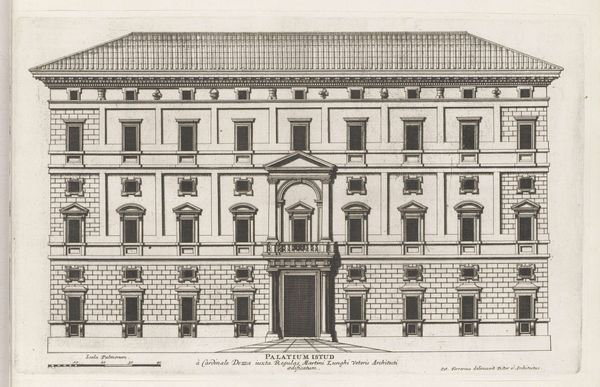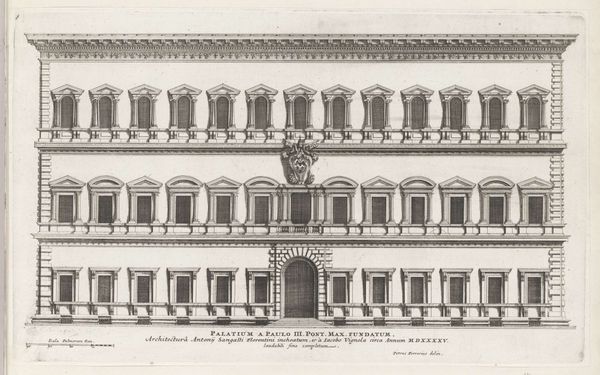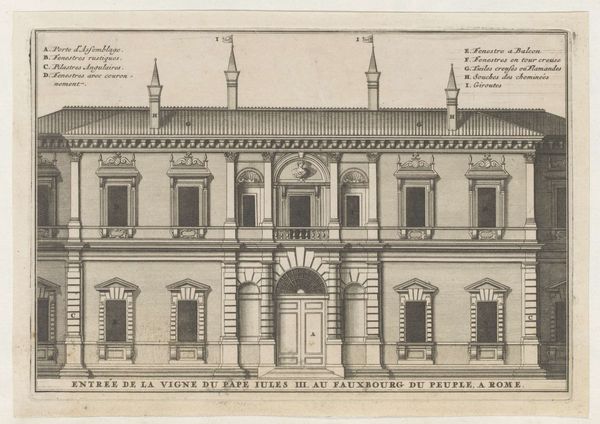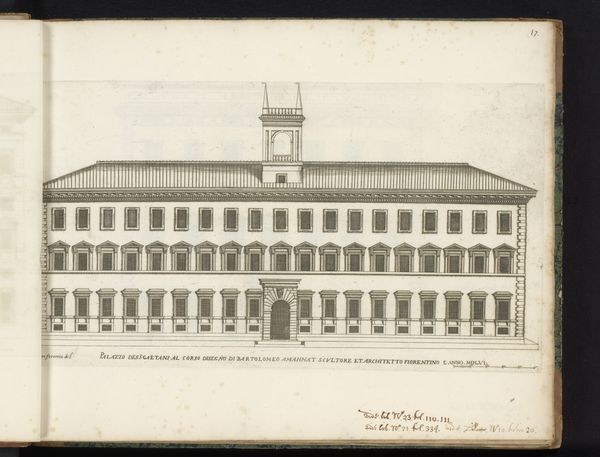
print, etching, engraving, architecture
#
baroque
# print
#
etching
#
cityscape
#
engraving
#
architecture
Dimensions: height 249 mm, width 422 mm
Copyright: Rijks Museum: Open Domain
Curator: Looking at this print by Giovanni Battista Falda, made around 1655, of the Facade van Palazzo Caetani te Rome… immediately I think: geometry. A rigid elegance. It’s so contained! Editor: I feel the power. The sheer, unyielding symmetry screams absolute authority, wouldn't you say? This isn’t just a building; it’s a statement etched in stone and replicated in ink. I am curious, what did the Caetani family want to express? Curator: The Caetani were… ambitious. They wanted to leave their mark—a tangible legacy. Notice how Falda uses etching and engraving; precise lines to illustrate every detail. Think of the labor involved! That precision underscores a controlled and idealized image of power, like they want to imprint themselves into Rome's very memory, one sharp line at a time. Editor: I noticed the way the facade is broken into tiers. It's like a carefully constructed visual argument. Ground floor: firm foundation, the family name chiseled over that stoic doorway! Then the more decorated first and second floor, perhaps displaying their political influence, crowned by that delicate loggia almost reaching for the heavens, but very self-possessed. What kind of impact did Baroque architecture like this actually have at the time? Curator: Rome was a stage and families like the Caetani wanted center stage! The drama of Baroque—the illusion, the scale—was meant to overwhelm and impress. It projects a specific kind of "Roman-ness". A clear nod to Imperial Rome, but refreshed with new, more modern flavors of Renaissance classicism. It's calculated, for sure, but it's a magnificent play. Editor: That central tower... such a peculiar addition, isn't it? As if it's daring to reach a higher realm. The Palazzo as a symbol transcends wealth; it communicates perceived worth, lineage and their contribution to Rome and Catholicism, obviously. Curator: It does. The print and drawing itself allows wider audience to view, examine and appreciate Roman civic design at the time, which ultimately informs other civic designs and aesthetics during this era, Editor: Exactly! A bold statement then, which this engraving preserves—more than just stone, it's ideas solidifying into cultural memory. Curator: It feels appropriate. We now appreciate this, displayed at the Rijksmuseum as the Palazzo now blends into the rest of Rome, another stone among many, though this engraving lets us relive that architectural intention!
Comments
No comments
Be the first to comment and join the conversation on the ultimate creative platform.
